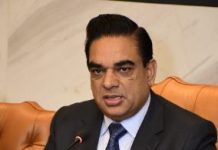ISLAMABAD: /DNA/ – The Pakistan Industrial and Traders Associations Front (PIAF) has said that high cost of doing business has proved to be dangerous for businesses, as ever-increasing cost of production is the real threat to the economy amidst frequent upward revisions in policy rate and continuous fluctuations in rupee against dollar.
PIAF Chairman Faheemur Rehman Saigol said that constant hike in power tariff has pushed the electricity prices higher and added to the already soaring cost of trade and industry. He asked the government to shut down all expensive oil-based power plants to ensure availability of cheaper energy for consumers. He condemned the government for shifting power distribution companies’ inefficiencies’ burden to the consumers by jacking up the tariff under the guise of Fuel Charges Adjustment.
He observed that the aggressive economic measures, high borrowing rates, inflation, oppressive taxation and unstable currency have been negatively affecting running businesses.
With a view to deal with fiscal challenges he asked the economic managers to work on the three-way strategy by implementing short-term goals that will help to keep generating resources for smooth fiscal operations, medium-term goals where the they should focus on financial inclusion, documenting the economy by designing a system where all businesses can be registered and properly document their income including collection of sales tax, initiating the process of privatization as well as improving governance by introducing reforms in each sector. As a long-term goal, the country must focus on improving its human capital, and revamping IT sectors by extending facilitations and providing all the requisite supports. In the same way, we also need to work on designing a comprehensive and proactive strategy to tackle challenges related to strengthening border security and implementing effective and comprehensive Anti-Money Laundering and Terrorist Financing measures holding accountable and taking to task all those who are involved in illegitimate activities, undermining both our economy and national interests.
The PIAF Chairman stated that the significant jump in electricity prices and hike in gas tariffs to meet the IMF condition will put additional burden of billions of rupee on consumers. He observed that it is unfortunate that the authorities in all governments continued to approve billions of rupees’ additional burden on consumers through a direct tariff increase and an indirect increase through the withdrawal of subsidies given to exporters and farmers earlier.
He said that the government liquidity and external vulnerability risks are elevated and there remain considerable risks around it’s ability to secure required financing to fully meet its needs for the next few years.
It is to be noted that the authorities had pledged to stop any further rise in circular debt adding that around Rs 250 billion was added to the gas circular debt annually though the actual figures are available with Petroleum Division. However, if 11.5 percent price hike for SNGPL and 11 percent tariff for SSGC was not implemented then the circular debt will rise to Rs 740 billion. At present, the gas tariff for residential consumers is Rs 450 per mmbtu in the Sui Southern Gas Company system against the prescribed price of Rs 850 per mmbtu and Rs 400 per mmbtu in the Sui Northern Gas Pipeline Limited system against the prescribed price of Rs 1,007 per mmbtu, showing a significant gap between sale price and actual cost of gas.
The PIAF Chief said that the economic managers did not have any pragmatic plan to address this liability, apart from asking for more loans to repay existing debt. Likewise, the target for current financial year’s exports is too low to meet the country’s revenue.
The conventional approach of focusing solely on improving exports while pursuing a passive and imprudent foreign policy towards neighboring countries, poses a significant challenge in meeting export targets. Despite strained relations, the United States remains the largest importer of Pakistani products. Still, there are no efforts to tap into the vast markets of neighboring countries or negotiate trade agreements with them.

















